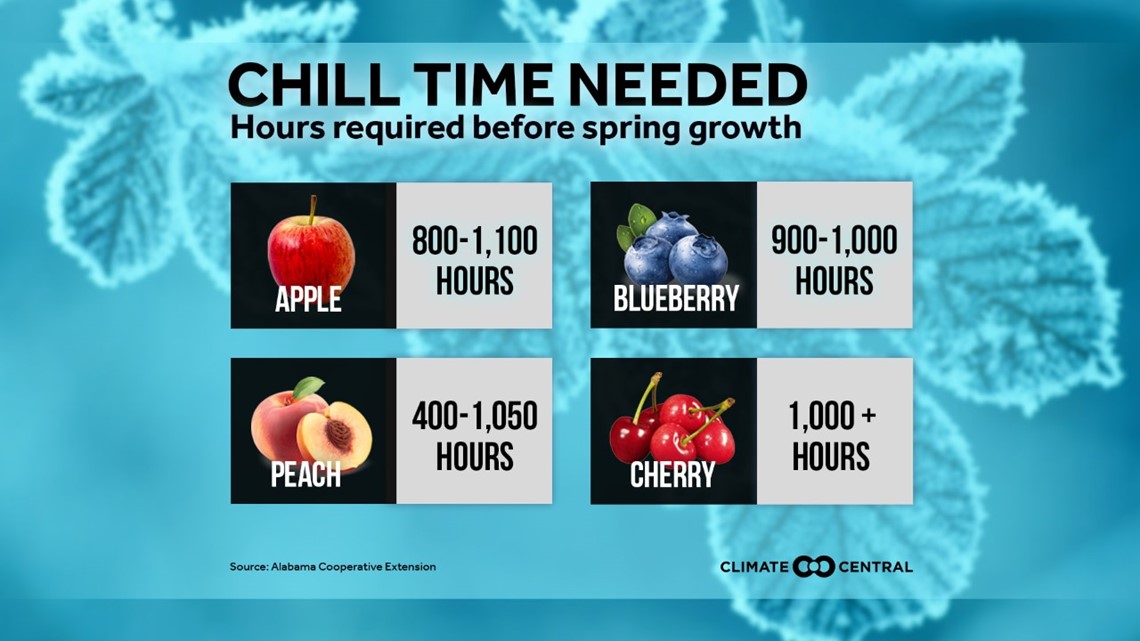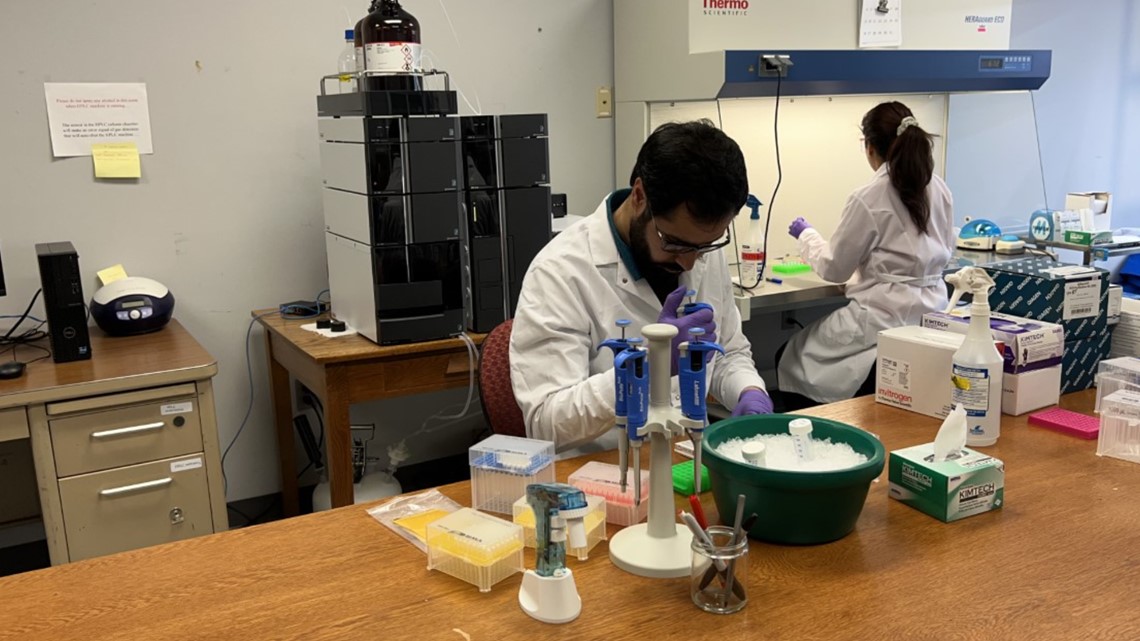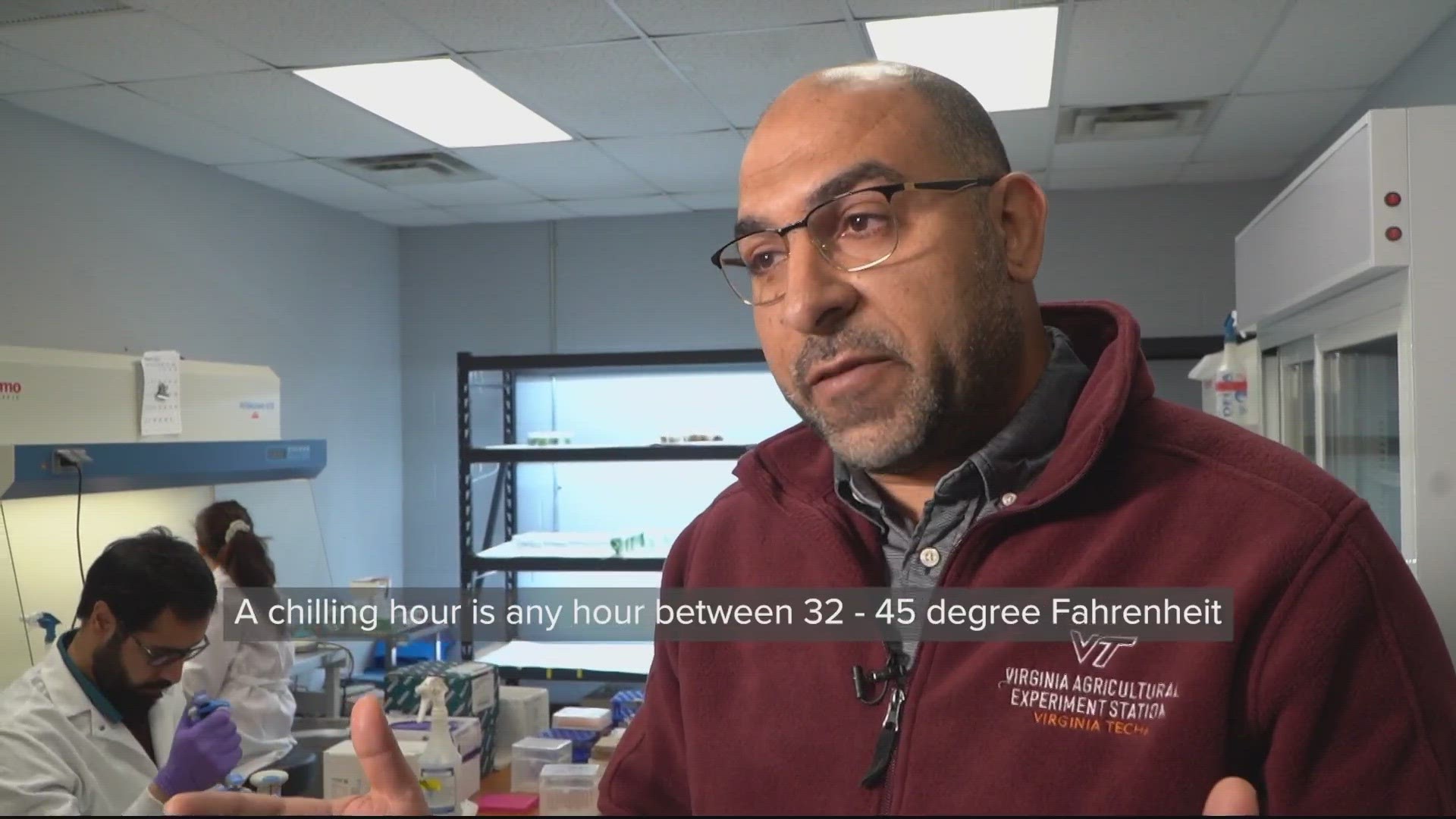WASHINGTON — One Virginia scientist is working with farmers in the Commonwealth to help protect fruit trees from late spring frosts.
"Sometimes it feels like you are fighting a losing battle with mother nature and that's where my research comes in," explains Dr. Sherif Sherif, an Assistant Professor of Horticulture at Virginia Tech. Dr. Sherif is committed to improving tree fruit resiliency in our changing climate.
"Most of our trees require a period of chilling," explains Dr. Sherif. "A chilling hour is any hour between 32-45 degrees Fahrenheit."
"Chill time" varies from fruit to fruit. Cherry trees require over 1,000 hours in that chill range, while peach trees need as few as 400 hours.


"Luckily until now, we have winters that satisfies the chilling requirement for most of our varieties and species," Dr. Sherif said.
The bigger threat is late spring frosts. As winters get warmer, trees develop a false sense of spring and bloom early - making them more sensitive to frost.
"A single frost event that can last for only a couple of hours can kill every single flower on the tree," according to Dr. Sherif.
Once a flower dies, fruit can no longer be produced. So Dr. Sherif is working with a team of researchers on two possible solutions. The first is genetic modification.
"We need to identify the genes that we can use to delay bloom and avoid spring frost damage," said Dr. Sherif.


The second is a topical solution.
"We identified a chemical inhibitor that when applied to the peach trees it can delay bloom for some time," said Dr. Sherif. "This way we can avoid spring frost."
This chemical solution is first applied to peach trees like this because stone fruits like peaches, plums and apricots are more susceptible to spring frost, but once that solution is fine-tuned it can be applied to all fruit trees.
Frost mitigation has been the name of the game for Bill Mackintosh over the past several years when it comes to a productive crop.
"It may allow us to have fruit in a year that maybe no one would have fruit otherwise," explains Mackintosh. "Before we started doing frost protection, you know we might have 10%, 15-20% in a good year. But now that we run heaters and wind machines, we can boost that up to 50-80%."
Heaters that blow warm air on the crops are typically only needed a handful of times after trees flower.
The power of wind serves as a more frequent form of protection.
"That layer of warm air that's above the cold air, it'll blend that, mix that with the cold air on the ground and we can raise the temperature from anywhere from 1 degree to maybe 4 or 5 degrees," Mackintosh explains.
In addition to his time spent testing in the lab and analyzing results in the orchard, Dr. Sherif works closely with farmers like Bill all across Virginia.
"I see the people facing these problems and anything I do in my research with impact, it will be obvious," said Dr. Sherif.
"Everybody is pulling for Sherif to make this work," added Mackintosh.
It will still take quite some time for research, testing and approval by the EPA or FDA to be complete. So Dr. Sherif says he's hopeful that in 7-10, there will be a product for commercial growers to use.

